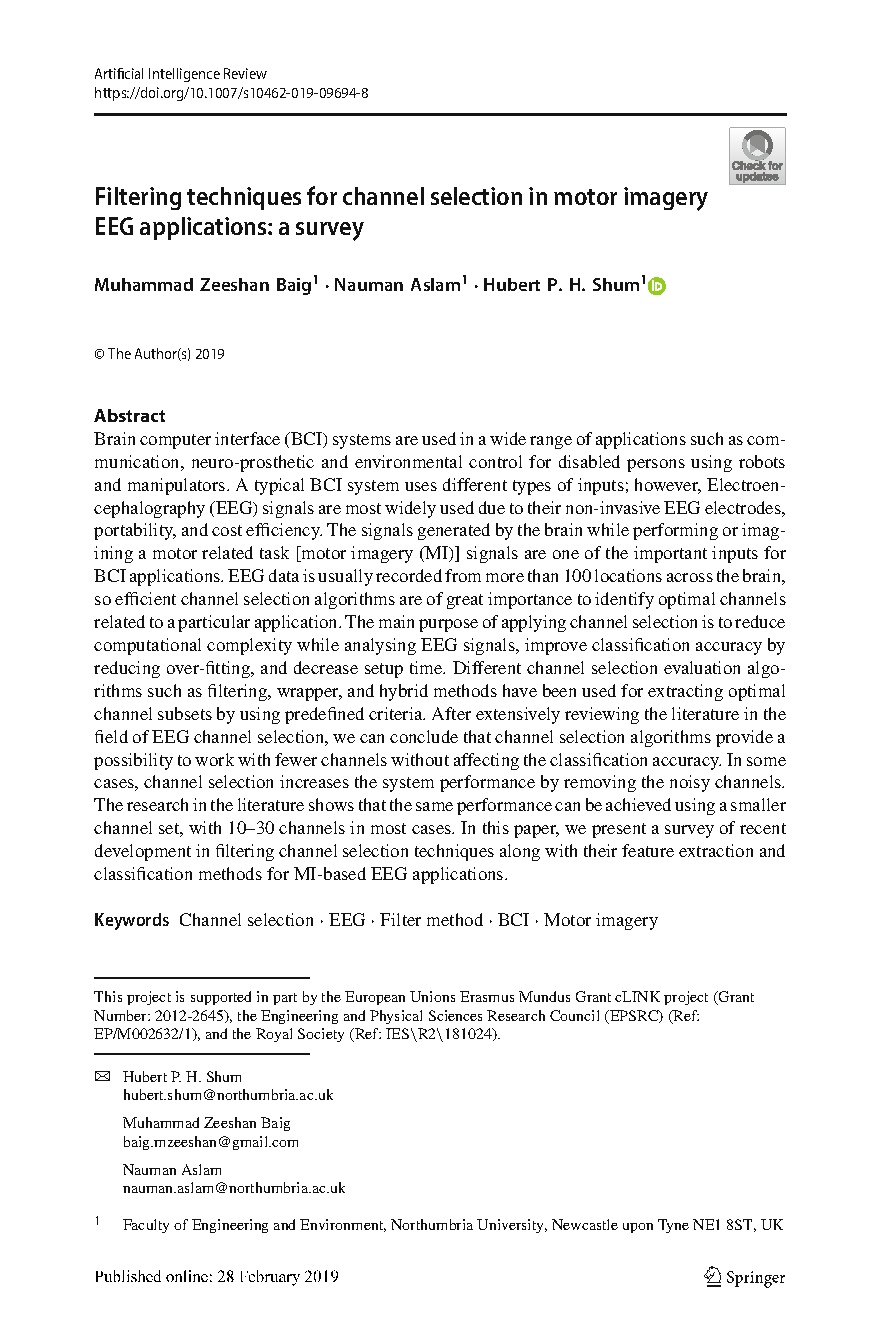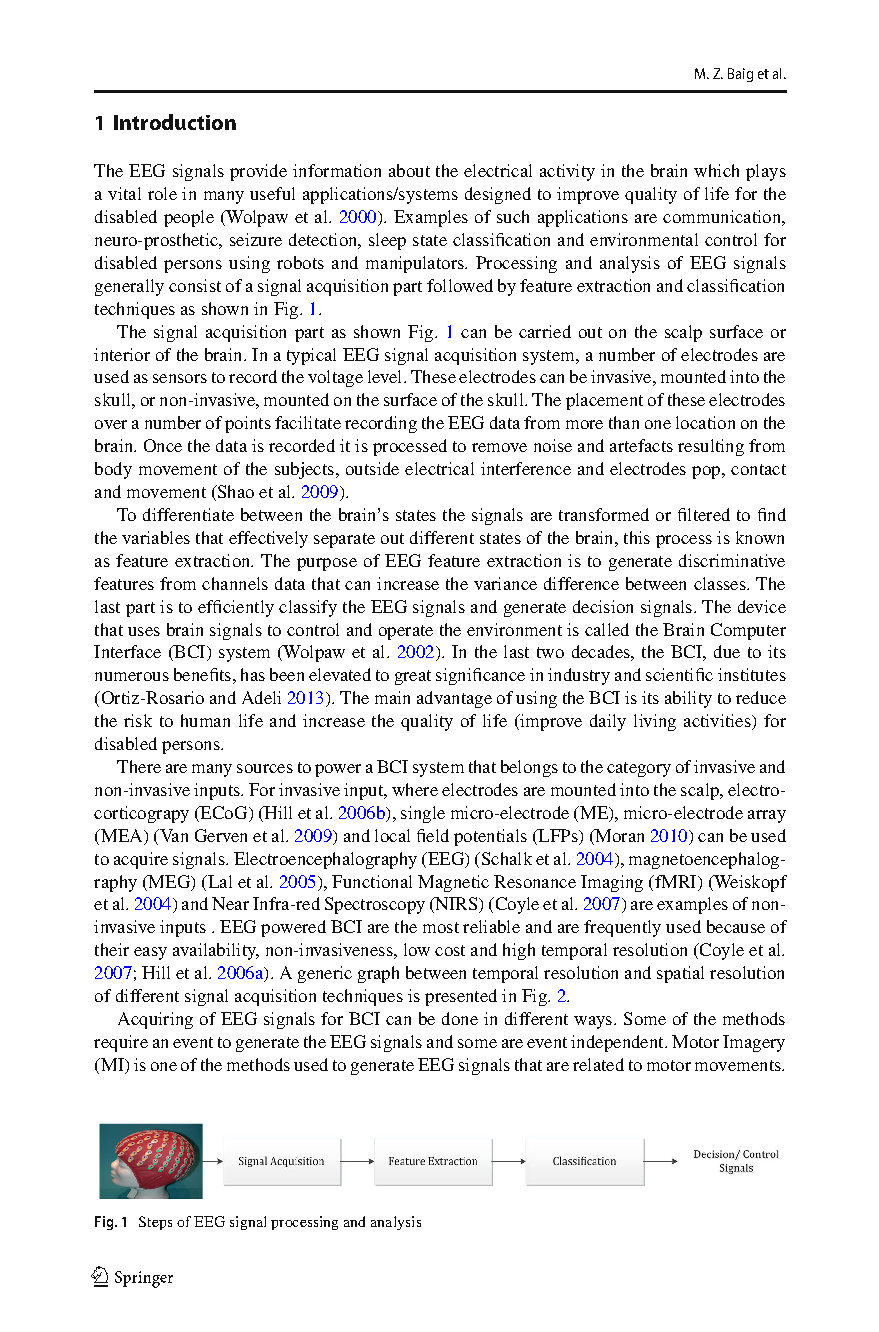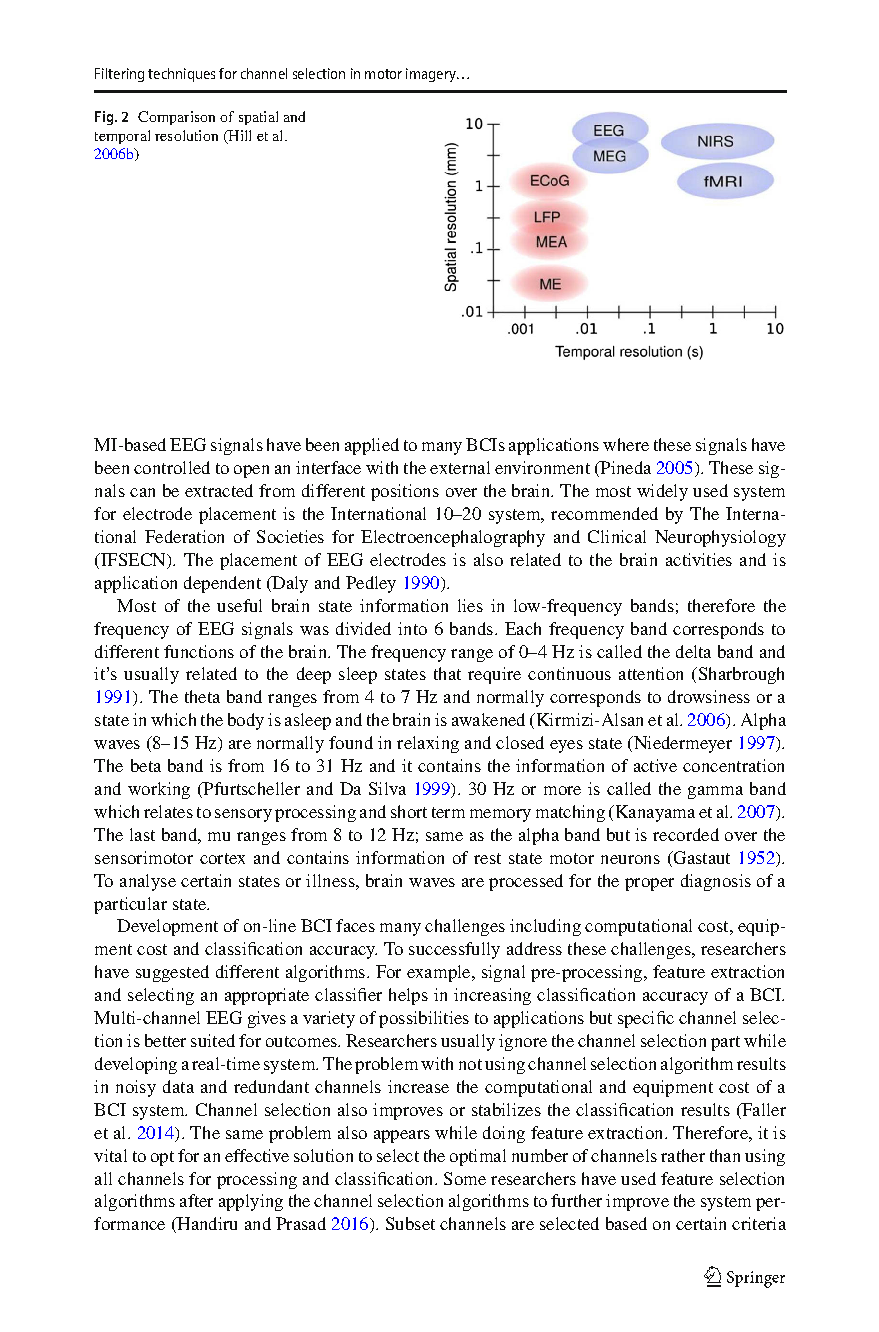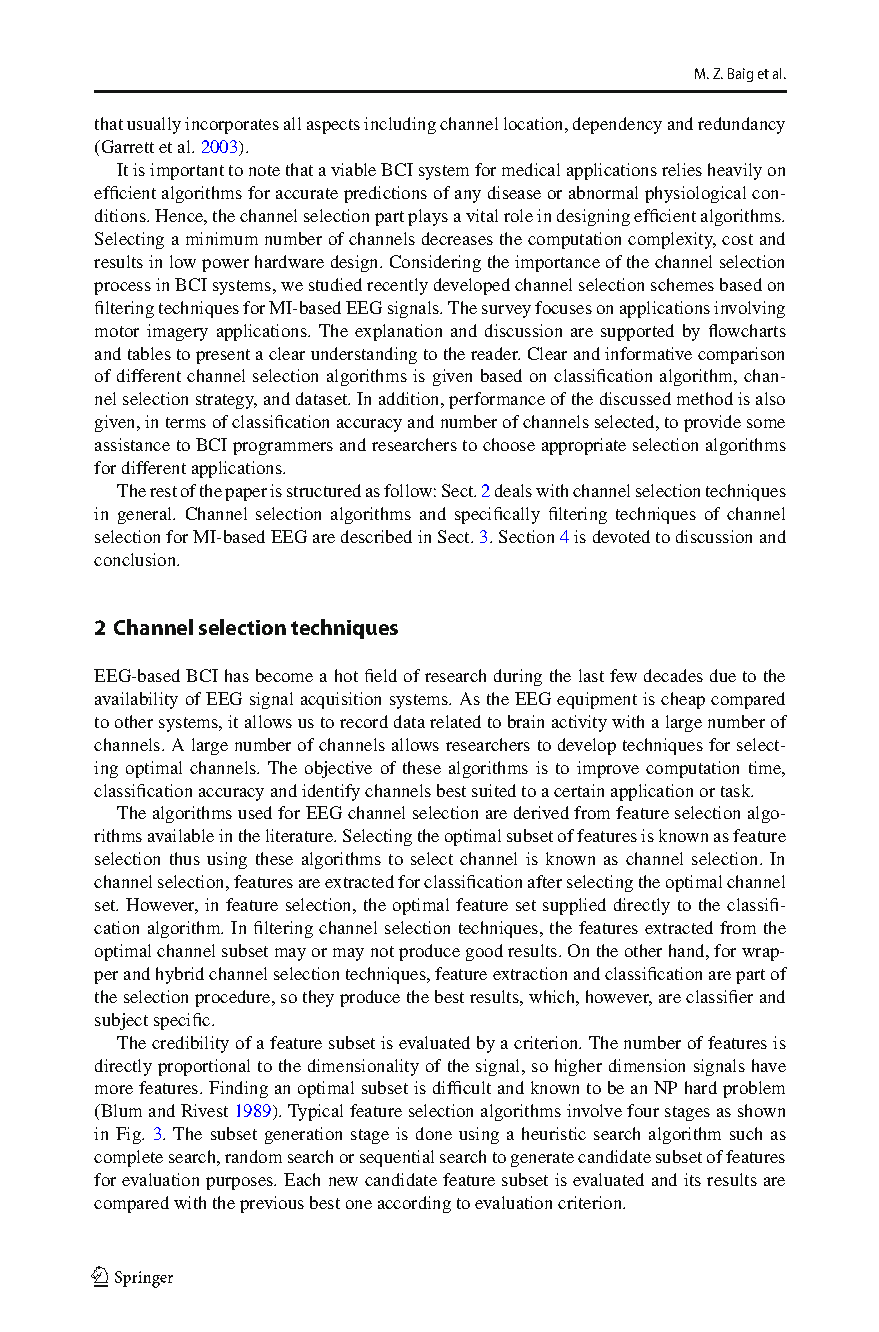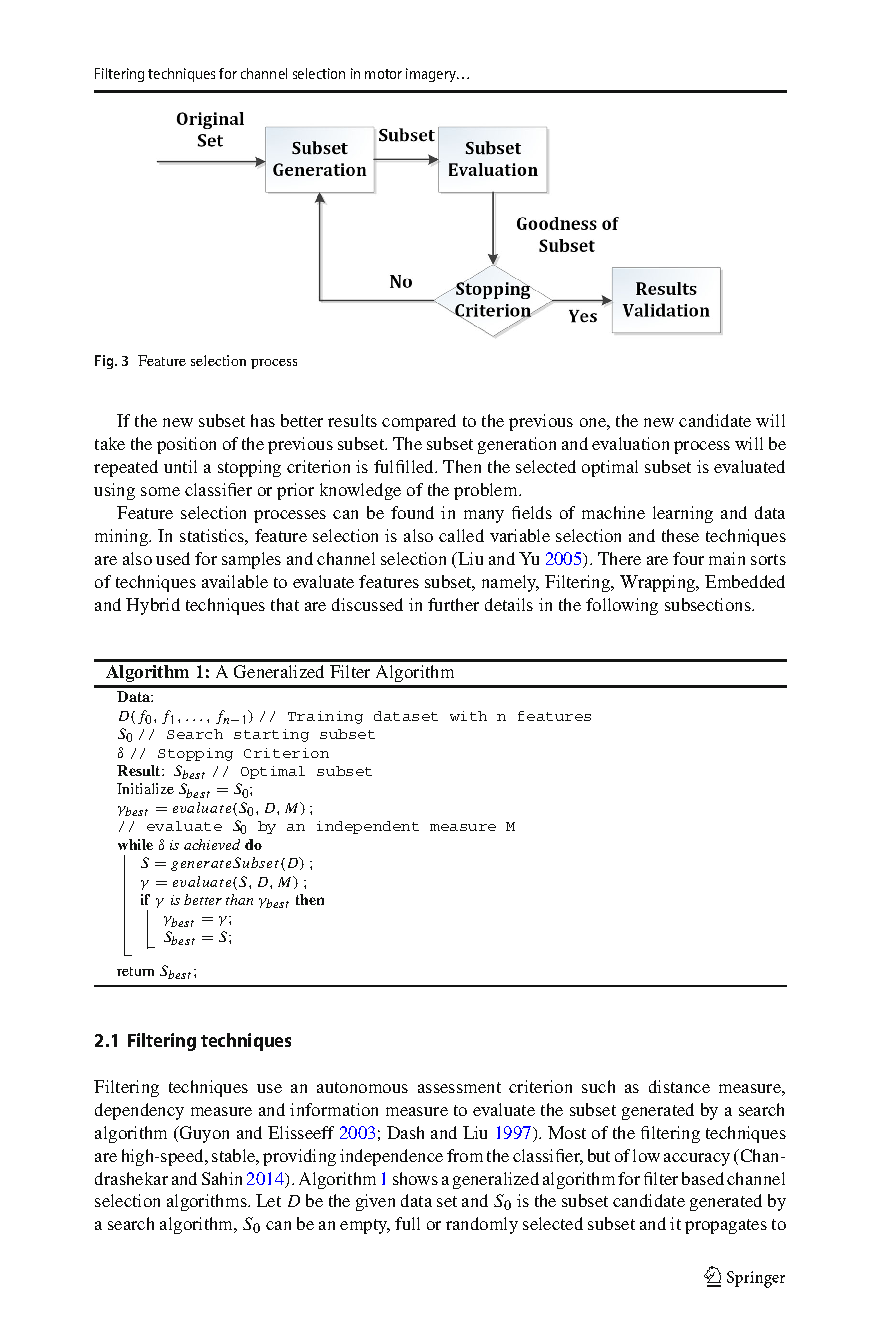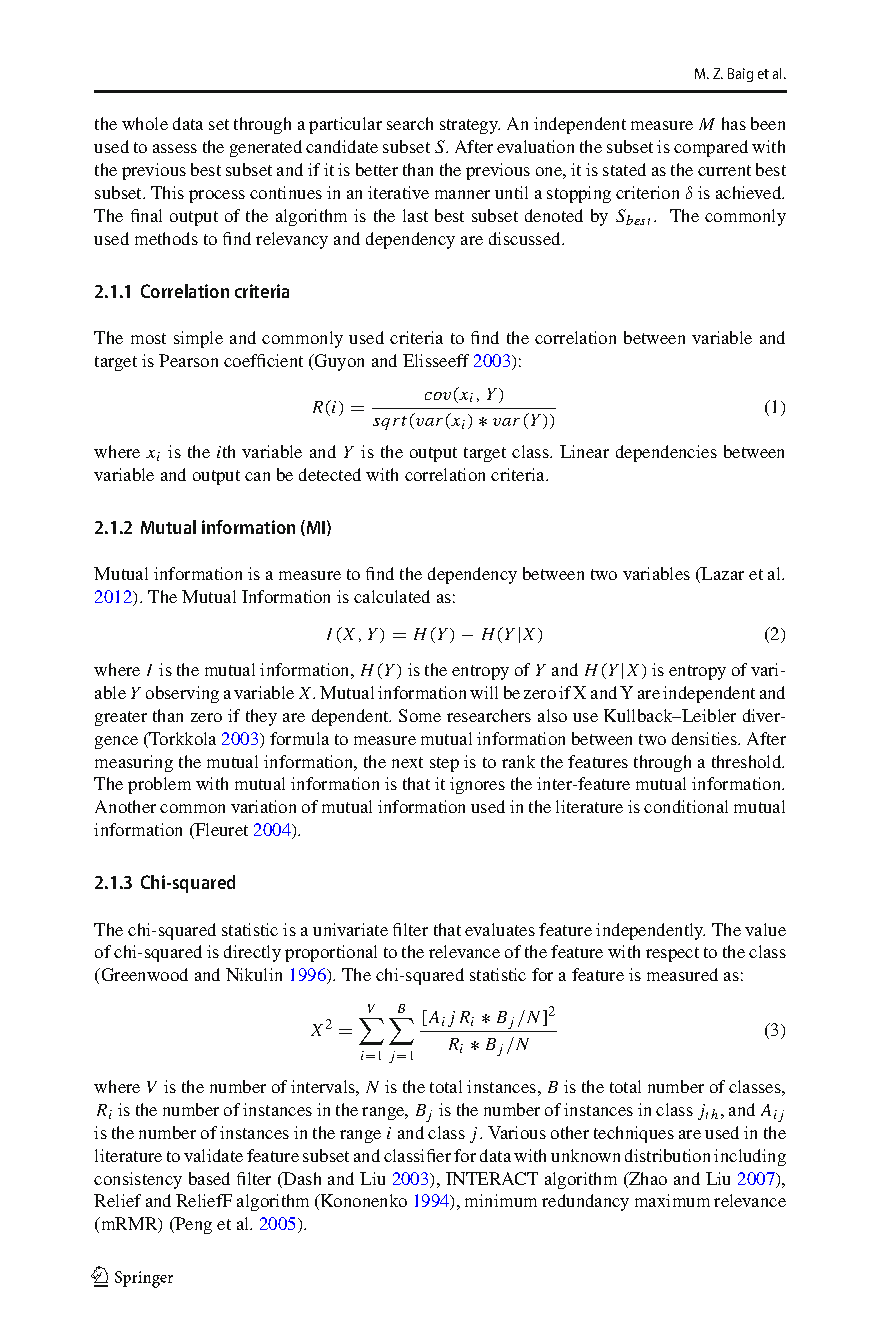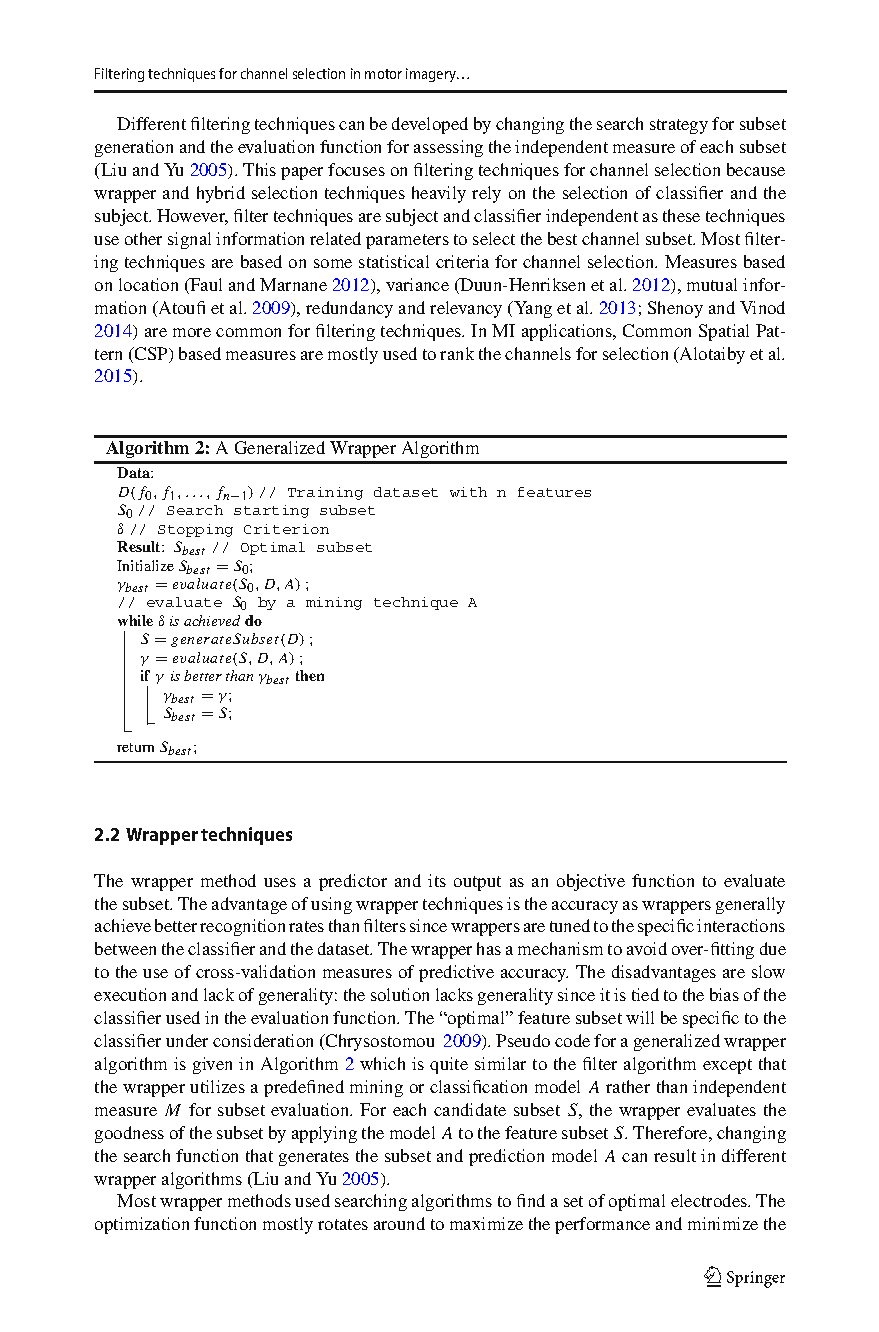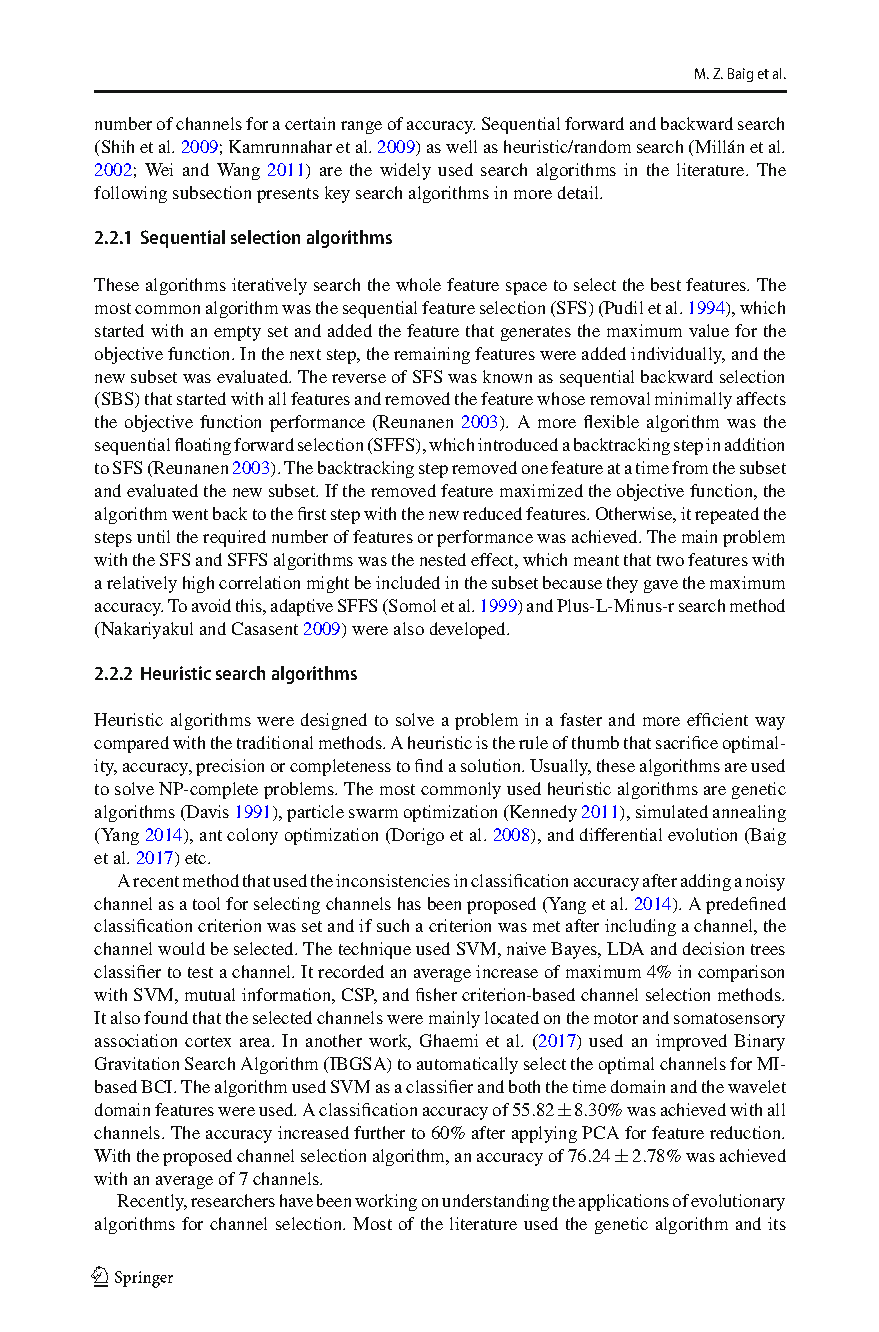Filtering Techniques for Channel Selection in Motor Imagery EEG Applications: A Survey
Muhammad Zeeshan Baig, Nauman Aslam and Hubert P. H. Shum
Artificial Intelligence Review (AIRE), 2020
Impact Factor: 13.9† Top 10% Journal in Computer Science, Artificial Intelligence† Citation: 183#

Abstract
Brain Computer Interface (BCI) Systems are used in a wide range of applications such as communication, neuro-prosthetic and environmental control for disabled persons using robots and manipulators. A typical BCI system uses different types of inputs; however, Electroencephalography (EEG) signals are most widely used due to their non-invasive EEG electrodes, portability, and cost efficiency. The signals generated by the brain while performing or imagining a motor related task (Motor Imagery (MI)) signals are one of the important inputs for BCI applications. EEG data is usually recorded from more than 100 locations across the brain, so efficient channel selection algorithms are of great importance to identify optimal channels related to a particular application. The main purpose of applying channel selection is to reduce computational complexity while analysing EEG signals, improve classification accuracy by reducing over-fitting, and decrease setup time. Different channel selection evaluation algorithms such as filtering, wrapper, and hybrid methods have been used for extracting optimal channel subsets by using predefined criteria. After extensively reviewing the literature in the field of EEG channel selection, we can conclude that channel selection algorithms provide a possibility to work with fewer channels without affecting the classification accuracy. In some cases, channel selection increases the system performance by removing the noisy channels. The research in the literature shows that the same performance can be achieved using a smaller channel set, with 10-30 channels in most cases. In this paper, we present a survey of recent development in filtering channel selection techniques along with their feature extraction and classification methods for MI-based EEG applications.
